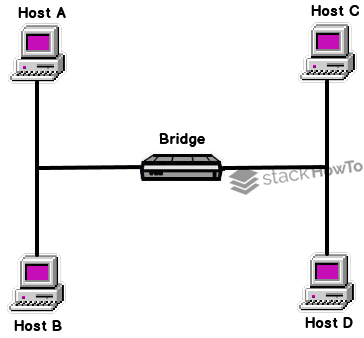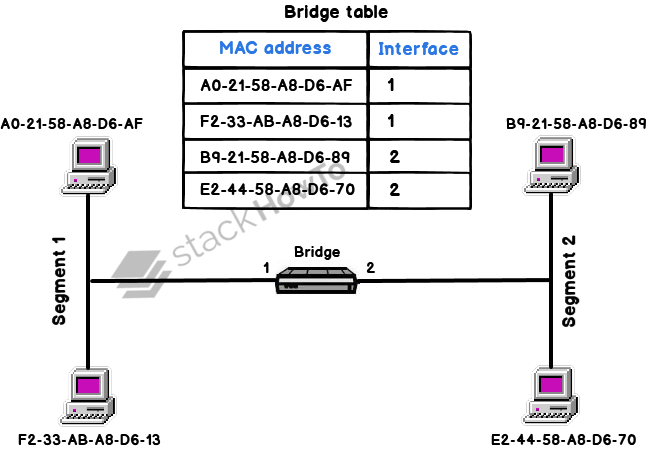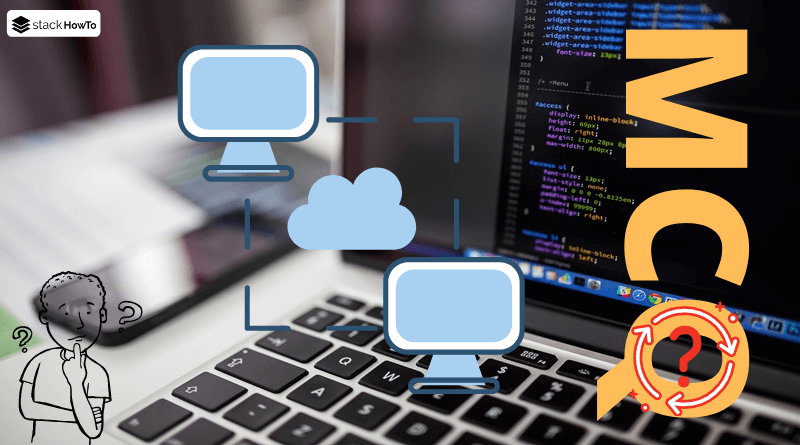What is Bridge in Networking?
In this tutorial, we are going to see What is Bridge in Networking?
A bridge is a hardware device that connects networks working with the same protocol. Thus, unlike the repeater, which works at the physical level, the bridge also works at the logical level (at layer 2 of the OSI model), i.e. it is capable of filtering the frames by letting pass only those whose address corresponds to a machine located at the other side of the bridge.
Thus, the bridge makes it possible to segment a network by keeping the frames for the local network at the local level and by transmitting the frames for the other networks. This reduces traffic (especially collisions) on each of the networks and increases the level of confidentiality because the information sent to one network cannot be heard on the other.
On the other hand, the filtering operation performed by the bridge can lead to a slight slowdown when passing from one network to the other, which is why bridges must be carefully placed in a network.

A bridge is usually used to pass packets between two networks of the same type.
How does Bridge works?
A bridge has two connections to two different networks. When the bridge receives a frame on one of its interfaces, it analyzes the MAC address of the receiver and the sender. If the bridge does not know the sender, it stores the address in a table in order to “remember” on which side of the network the sender is located. Thus the bridge is able to know if the sender and receiver are located on the same side or on both sides of the bridge. In the first case, the bridge ignores the message, in the second case the bridge transmits the frame on the other network.
A bridge operates at the Data Link layer of the OSI model, which means that it operates at the level of the physical addresses of machines. In fact, the bridge is connected to several local networks, called segments. The bridge builds a table of correspondence between the addresses of the machines and the segment to which they belong and “listens” to the data circulating on the segments.
During data transmission, the bridge checks on the correspondence table the segment to which the transmitting and receiving computers belong (thanks to their physical address, called MAC address, and not their IP address. If they belong to the same segment, the bridge does nothing, otherwise, it will switch the data to the segment to which the receiver belongs.

The bridge makes it possible to segment a network, which means that, in the above example, the communications between the 2 computers represented at the right do not encumber the lines of the network between the 2 computers at the left, the information will pass only when a computer on one side of the bridge sends data to a computer on the other side.
On the other hand, these bridges can be connected to a modem, in order to ensure the continuity of a local network at a distance.





